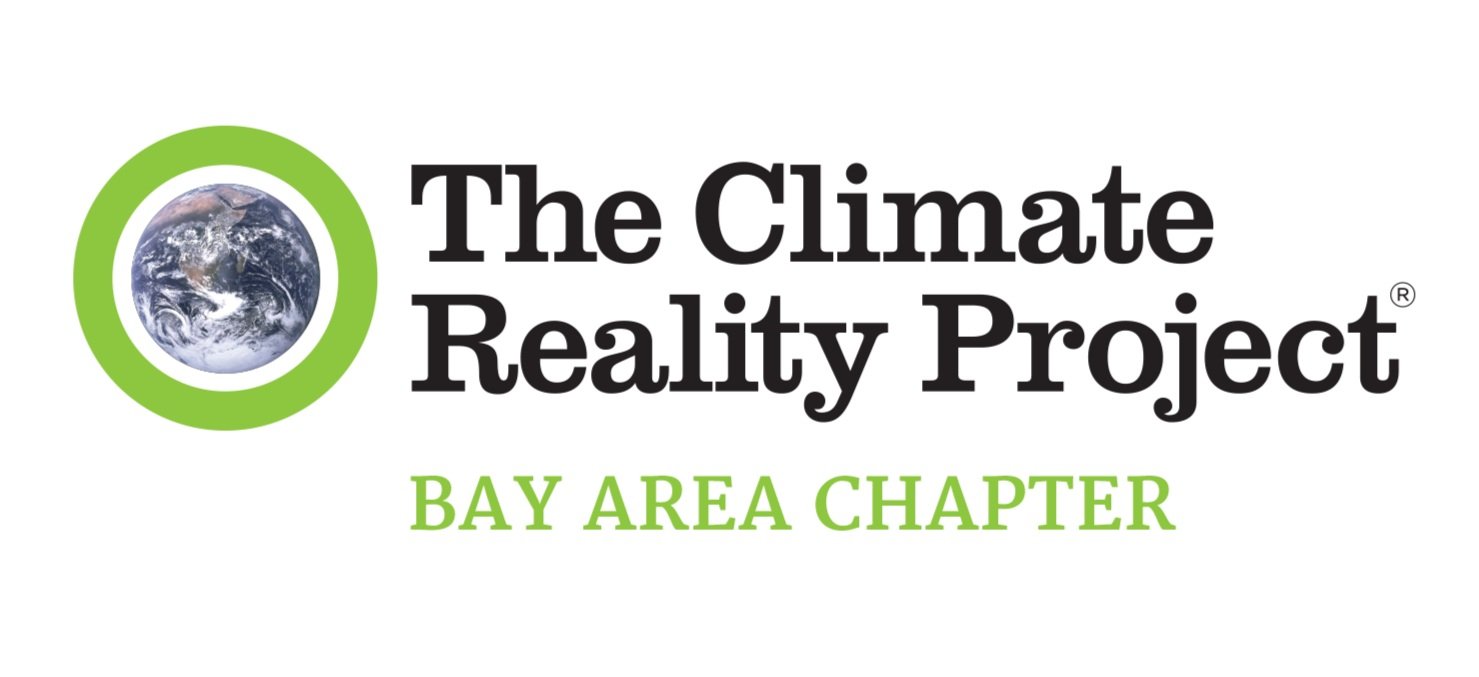“Everyday Climate Champions” Podcast Episode 3: Art as Climate Activism
Written by Mina Rios
Learn more about Climate Reality Bay Area’s podcast, Everyday Climate Champions here.
“Art touches people in a different way than listing statistics…an artist can take that same concept and convey it in a more meaningful way to a different audience”
Transcript: here
Guests: Logan Evasco, Program Director, The Climate Gallery and Mira Musank, exhibiting artist and garment refashioner/textile waste upcycler
Host: Dalya Massachi
Summary:
The Climate Gallery is a new virtual art gallery where artists engaging with climate change can showcase their art to audiences through a digital platform. The first exhibit, “Artivism,” debuted in mid-November 2022 and featured five artists. In the long term, the gallery hopes to become an artistic hub for artists to physically showcase their artwork as well.
Why This Matters:
As an artistic outlet for expression, The Climate Gallery recognizes the despair associated with the constant influx of disastrous news and aims to help by offering a platform that will help grow the community of climate activists.
There’s an infinite number of ways in which the complex subject of climate change and climate solutions can be interpreted through art. Because art has the capacity to evoke meaningful conversation and motivate people to become active in the climate movement, the new virtual Climate Gallery serves as a valuable new outlet for artists to address the climate crisis.
Key Takeaways
Logan Evansco worked as a graphic designer in 2019 and became increasingly concerned about climate change. When she started asking herself how she could apply her skills to make a difference in the climate movement, she found others asking themselves the same question. To this end, the idea of a virtual reality Climate Gallery emerged.
The intention behind creating a virtual gallery was to reach a broad audience. Using the free platform Mozilla Hubs, Evansco began building her audience by engaging with people interested in new technology: an approach she says yielded promising results.
Exhibiting artist Mira Musank describes the virtual reality gallery as having a similar appearance to a 3D gaming site. Visitors click on a link in their browser, enter a room, choose a digital avatar, then move the keypad or mouse around the 3D space on screen. Visitors can move their avatar in a physical space that is viewed on a phone, tablet, or computer. Using proximity microphones, people can interact by audio with other people’s avatars.
Musank was among five artists whose work was featured in the first Artivism virtual exhibit in November 2022. Her work includes one-of-a-kind garments using textile samples, scraps, and pre-owned clothes, used linens, and curtains - extending the lifespan of fabrics before ending up in a landfill. With fast fashion ( the inexpensive reproduction of trendy fashion) being a major contributor to over-consumption and landfill waste, textile upcycling artists are always looking for ways to repurpose fabrics. Musank says that even the smallest pieces of fabric can be mixed, creating textured patterns for different garments, such as jackets or gowns.
Scientist and painter Klara Meisch presented a collection of oil paintings for the Artivism exhibit. Meisch splits her time living in Alaska, California, Washington, and Hawaii, while doing scientific research and painting natural landscapes to document the state of the environment she observes.
Carpenter and puppeteer David Solnit, known for his talents in signage messaging, presented original climate works through screen printing during the Artivism exhibit. Solnit is also the editor of Globalize Liberation: How to Uproot the System and Build a Better World (City Lights Books).
Tokyo-based visual artist Minori Murata, who uses VR (virtual reality) and AR (augmented reality) to depict the climate crisis and waste in Japan, was among the featured artists in the Artivism exhibit. Murata is also an advertising art director for various fashion brands.
Rose McAdoo, a scientist with the NASA Atmospheric Research camp in Antarctica, presented virtual samples of her work using found objects in the environment to create edible art: applying scientific and natural perspectives to making extraordinary cakes.
The Climate Gallery strives to build new environmental partnerships with organizations such as 350 Bay Area – a fossil fuel resistance group. The Climate Gallery also offers environmental justice micro-grants for small projects and individual organizers. Black Millennials for Flint is a former grant recipient.
How to Take Action
The Climate Gallery is accepting art submissions for its future gallery presentations; see their website for more info. Artists of all disciplines are welcome. Ideal candidates are artists that encourage direct action in the climate crisis.
Even if you are not a professional artist, you can also integrate climate action in your art!
Related Websites:
The Climate Gallery: Experience the work featured in the Climate Gallery’s first exhibition, Artivism
Climate Creative: The growing non-profit climate arts community behind the Climate Gallery
Climate Gallery Micro-Grants: Find out about this funding opportunity
Fafafoom Studio: Learn more about Mira Musank’s work as a garment refashioner and textile waste upcycler
Black Millennials for Flint: One of the first recipients of a Climate Gallery micro-grant
350 Bay Area: One of the partner organizations of the Climate Gallery
Contact Us: Do you know a Bay Area-based Everyday Climate Champion? We’d love to interview them! Or just want to share a comment or hear about new episodes?
Get in touch: crba.eccpodcast@gmail.com
Get notified of new episodes HERE
Podcast Production Team: Executive Producer: Dalya Massachi; Sound Designers: Kayla Anchell, Trevor Skerbe; Co-Hosts/Researchers: George Dy, Ellisa Feinstein, Isabella Genereaux, Sean Mendelson, Hasini Parepalli, Lex Schrader, Alex Williams; Logo Designer: Gabriela Vargas
